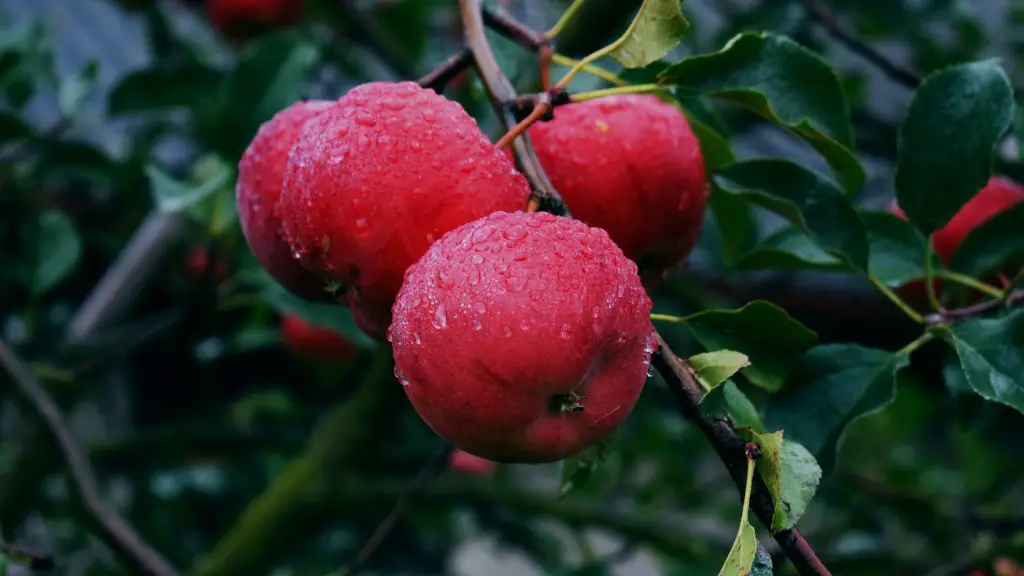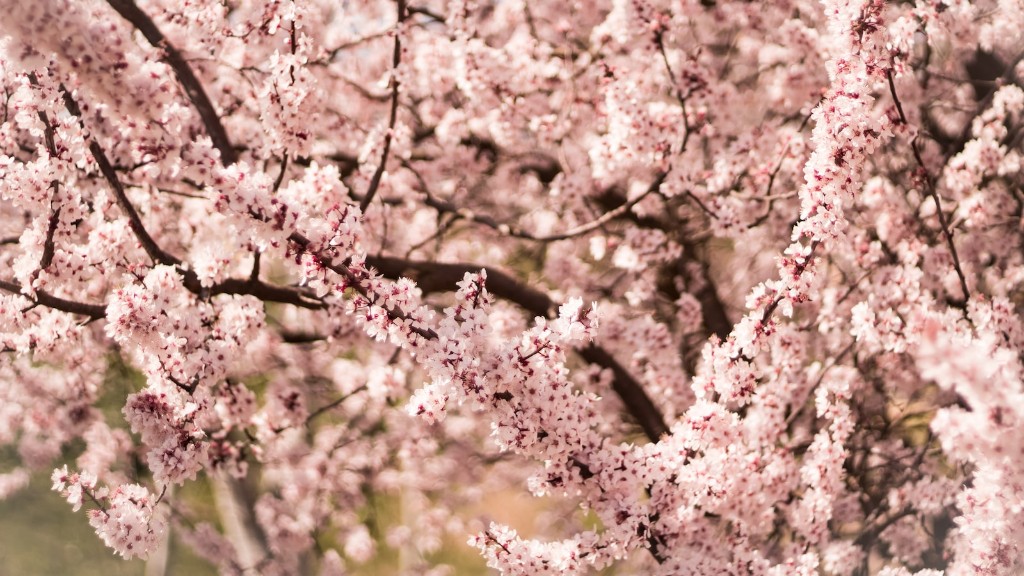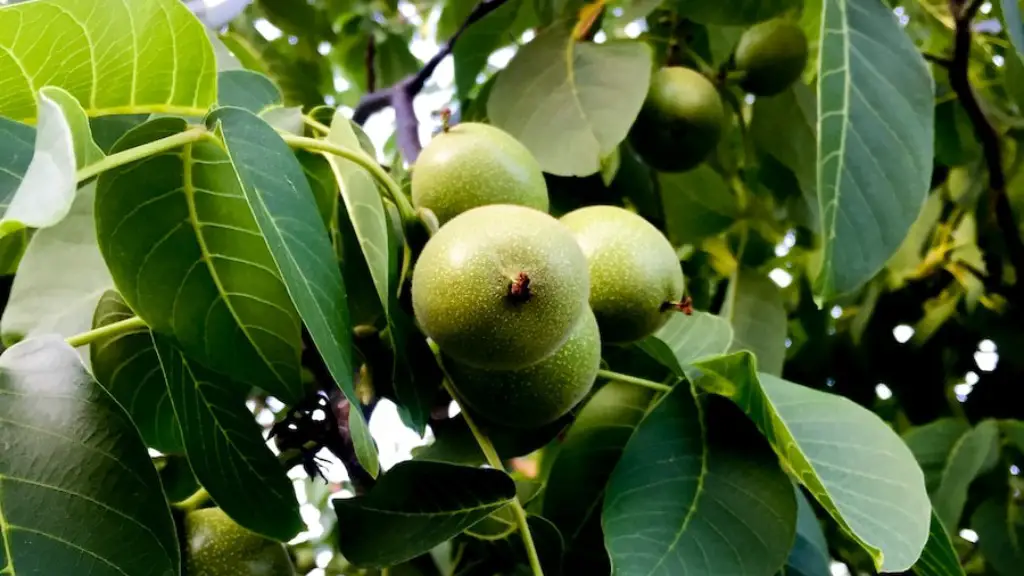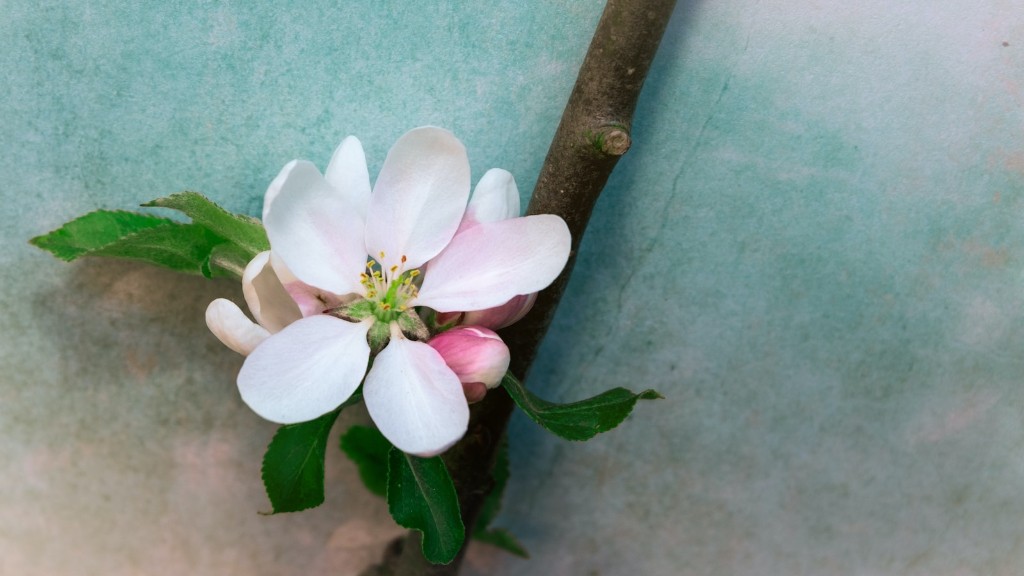Dwarf Fuji apple trees are a wonderful addition to any garden, requiring minimal maintenance and offering a plentiful harvest of juicy fruit each year. But just how big can one of these trees get?
The maximum height of a dwarf Fuji apple tree typically ranges from 1.5 to 5 meters (5 to 16 feet). These trees are quite compact and are perfect for smaller gardens or even containers. It’s important to note, however, that as the tree matures, it can take up more space. For this reason, pruning is recommended in order to obtain desired size and shape.
When choosing a dwarf Fuji apple tree, it is important to pick a variety that has been specifically bred for smaller sizes. Trees that haven’t been bred specifically for dwarfing can still get quite large, so it is worth doing your research before buying the tree.
The overall size of the tree is also determined by care, soil, and climate. Proper pruning and fertilizing will encourage a healthy tree and help it reach its maximum potential. On the other hand, if the soil is too poor or if it is a colder climate, the tree will be more likely to stay on the smaller side.
It is also important to give the tree enough space. Dwarf Fuji apple trees need room to spread in order to reach their maximum size. Planting too close to other trees or structures can limit its growth.
When cared for properly, a well-chosen dwarf Fuji apple tree will provide an abundant harvest for years to come.
Pruning for Size
Regular pruning is an important part of keeping a dwarf Fuji apple tree to an acceptable size. Pruning encourages bushier growth and ensures that the branches don’t get too large. Dead or loose branches should be removed, as they can become a safety hazard. Young branches can also be thinned out so that the tree maintains a more pleasing shape.
In addition, pruning helps the tree to focus its energy on producing fruit, rather than simply growing larger. This means that you will have more apples to enjoy each season. Pruning should ideally be done in early February, so that the tree has the entire season to recover.
Due to its size, pruning a dwarf Fuji apple tree can be done using just hand pruners. No special tools or ladders are needed to perform the task. Simply check the branches for dead or loose material, and use the pruners to remove them. If necessary, thinning out young branches can also be done.
It is important to remember that pruning is a process and it may take multiple sessions in order to achieve the desired shape and size. Some gardeners may find the task daunting, but the effort will pay off in the long run. Remember, pruning helps the tree to focus its energy on fruit production, and keeps it in an acceptable size and shape.
Soil Requirements
The soil in which the dwarf Fuji apple tree is planted can also be critical for controlling the tree’s size. The best soil for a dwarf Fuji tree will include plenty of compost and organic matter. This helps with moisture retention, as well as nutrient availability. In addition, the soil should be slightly acidic with a pH range of 5.5 to 6.5.
The tree should also be planted in full sunlight, as it prefers at least 6 hours of direct sun each day. While the tree may be able to tolerate some shade, too much shade can limit fruit production. Additionally, the soil should be kept moist but not wet. Overwatering can lead to root rot, which can be fatal.
Finally, fertilization can be beneficial to the tree in order to maintain proper health. Use a slow-release fertilizer, applied in early spring, to help the tree reach its maximum potential.
Minimum Climate Requirements
In order for the tree to reach its full size potential, it is important to have the proper climate. Dwarf Fuji apple trees are hardy in zones 5 through 8, and they will generally do well in more mild climates.
When planting the tree, it is important to carefully read the tags attached to the plant, which will list the specific climate requirements for each particular variety. It is also important to note that cold, harsh winters can limit the size of the tree. This is because it takes energy for the tree to recover from cold temperatures, energy that could otherwise be used for growth and fruit production.
For gardeners living in more extreme climates, dwarf apple trees are still possible, but it is important to choose varieties that are more suited to the environment. For example, there are some varieties of dwarf Fuji that can tolerate temperatures as low as -14°F (-25°C).
Overall, it is important to choose the appropriate variety for your specific climate in order to prevent disappointment down the road.
Pollination and Fruit Production
In order for the dwarf Fuji apple tree to reach its full size potential, it is important to ensure that the tree is properly pollinated. Sometimes, due to lack of pollinators or rainy weather, the tree struggles to produce fruit.
In order to increase the chances of successful pollination, it is recommend that gardeners plant more than one variety of apple tree. This ensures that the trees can cross-pollinate, thus increasing the chances of a bountiful harvest. Pollinating insects, such as bees and butterflies, should also be welcomed into the garden in order to help with the process.
The tree should also be pruned properly in order to promote healthy fruit production. Proper thinning and pruning will also ensure that the branches do not become overcrowded, which can be detrimental to both the size and health of the tree.
When it comes to harvesting the fruit, the timing will depend on the variety. Some fruits are ready to pick early, while others may take the entire season before they are ripe for harvest. As such, it is important to carefully read the tags attached to the tree and familiarize yourself with the exact variety before harvesting.
Finally, it is important to remember that the fruit of a dwarf Fuji apple tree will still remain relatively small compared to other varieties. That said, the small size should not detract from the flavor and juiciness of the fruit.
Caring for the Dwarf Fuji Apple Tree
Caring for a dwarf Fuji apple tree is not overly complicated, but proper maintenance does require some time and effort. To ensure that the tree reaches its full size potential, regular watering and fertilizing is essential. Additionally, the tree should be pruned regularly to promote healthy growth and to limit size, as needed.
In colder climates, it is important to pay close attention to the buds during the winter. If temperatures drop too low, the buds may be damaged and fruit production may suffer. If necessary, it may be beneficial to plant a variety that is more tolerant of colder temperatures. Additionally, it is important to take care when researching varieties, as some are grafted onto rootstocks that are more tolerant of cold.
In order for the tree to reach its full size potential and produce healthy fruit, it is important to ensure that it receives the proper sunlight, water, soil, and fertilization. It is also important to remember that pruning is essential to maintain the desired size and shape.
Finally, proper pest control is also essential for a healthy tree. Common pests, such as apple scab and codling moths, can be detrimental to fruit production. Therefore, it is important to regularly inspect the tree for signs of damage and to take action when needed.
Growth Restriction
In some cases, it may be necessary to restrict the growth of a dwarf Fuji apple tree. In such cases, the tree should be kept in a pot or planter that is large enough to accommodate its size. If the tree is kept in a container that is too small, it will be unable to grow to its full potential, and may become stunted.
Container-grown apple trees require more frequent waterings, as the soil in the pot tends to dry quickly. Additionally, heavier fertilization may be necessary due to reduced root space. In order to restrict growth, it is important to prune aggressively and, if necessary, to use root pruning techniques to restrict the roots from growing outward.
When grown in a container, it is important to ensure that it has sufficient drainage and airflow. The pot should be large enough so that the tree does not become root-bound, and it should be placed in an area that receives at least 6 hours of sun each day.
Placing a dwarf Fuji apple tree in a container is also beneficial for gardeners who wish to move the tree from place to place. The container also allows for easier transport if the tree needs to be moved due to weather or undesirable growing conditions.
Harvesting the Dwarf Fuji Apple Tree
Harvesting the fruit of a dwarf Fuji apple tree is a rewarding experience, and it is important to have the proper tools on hand. An apple picker helps to reduce the risk of injury, as it allows for easy retrieval of the fruit without having to climb up and down a ladder. Fruit that is near the top of the tree can be difficult to access without the proper equipment.
Of course, it is also important to know when to start harvesting the fruit. This will vary depending on the variety and the climate, so it is important to check the tags and research the variety. Typically, the fruits can be harvested when they turn yellow or when they have reached the desired size.
Once the fruit is picked, it should be eaten right away or stored properly. Freshly-picked fruit can be stored in the refrigerator for up to two weeks, or placed in bags and frozen for up to six months. If the fruit is to be canned, it should be done within 12 hours of harvesting.
In order to reap the full rewards of a dwarf Fuji apple tree, it is important to ensure that it is cared for properly and harvested at the right time. With proper maintenance and pruning, the tree can provide a bountiful harvest for many years to come.





